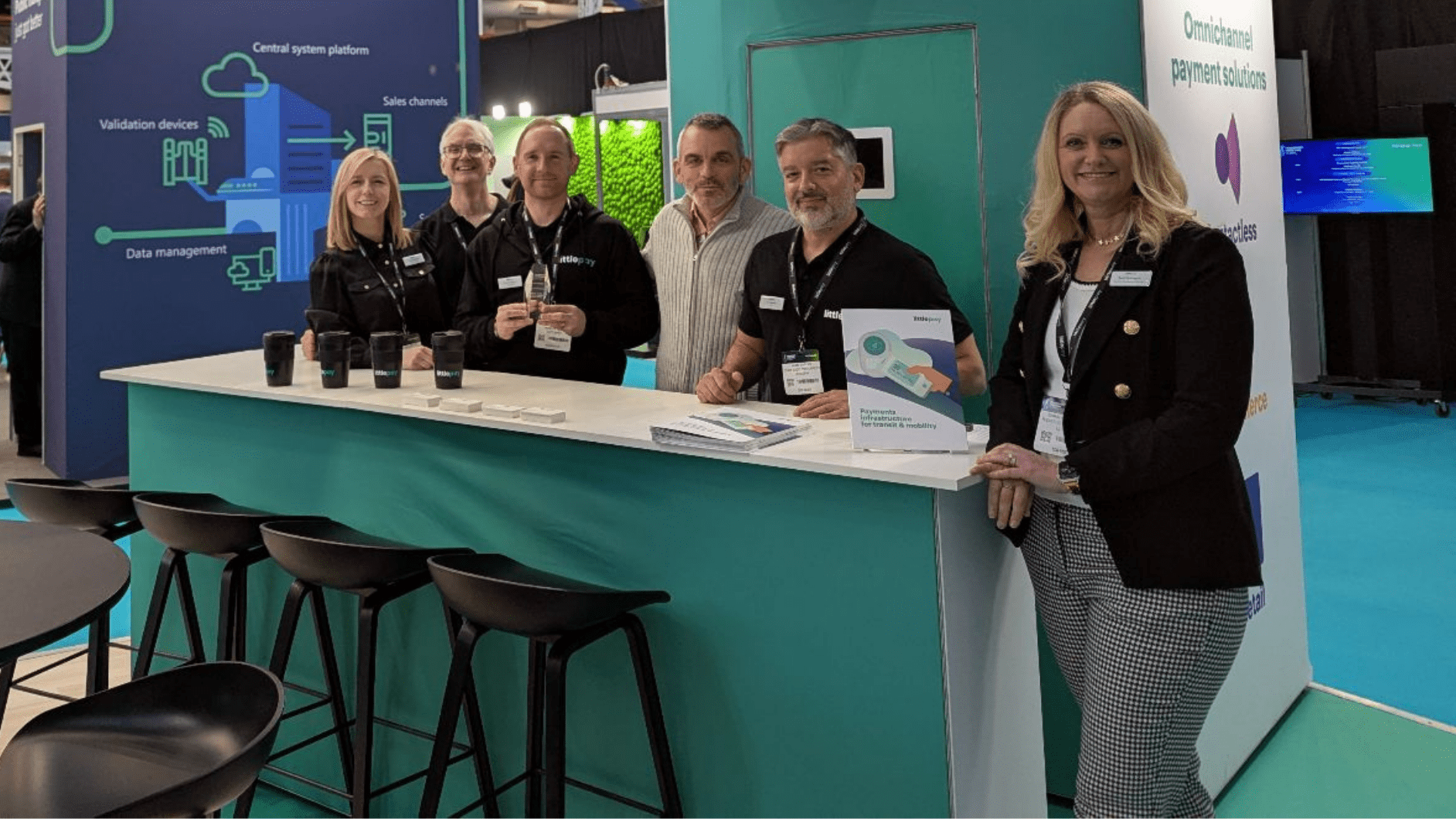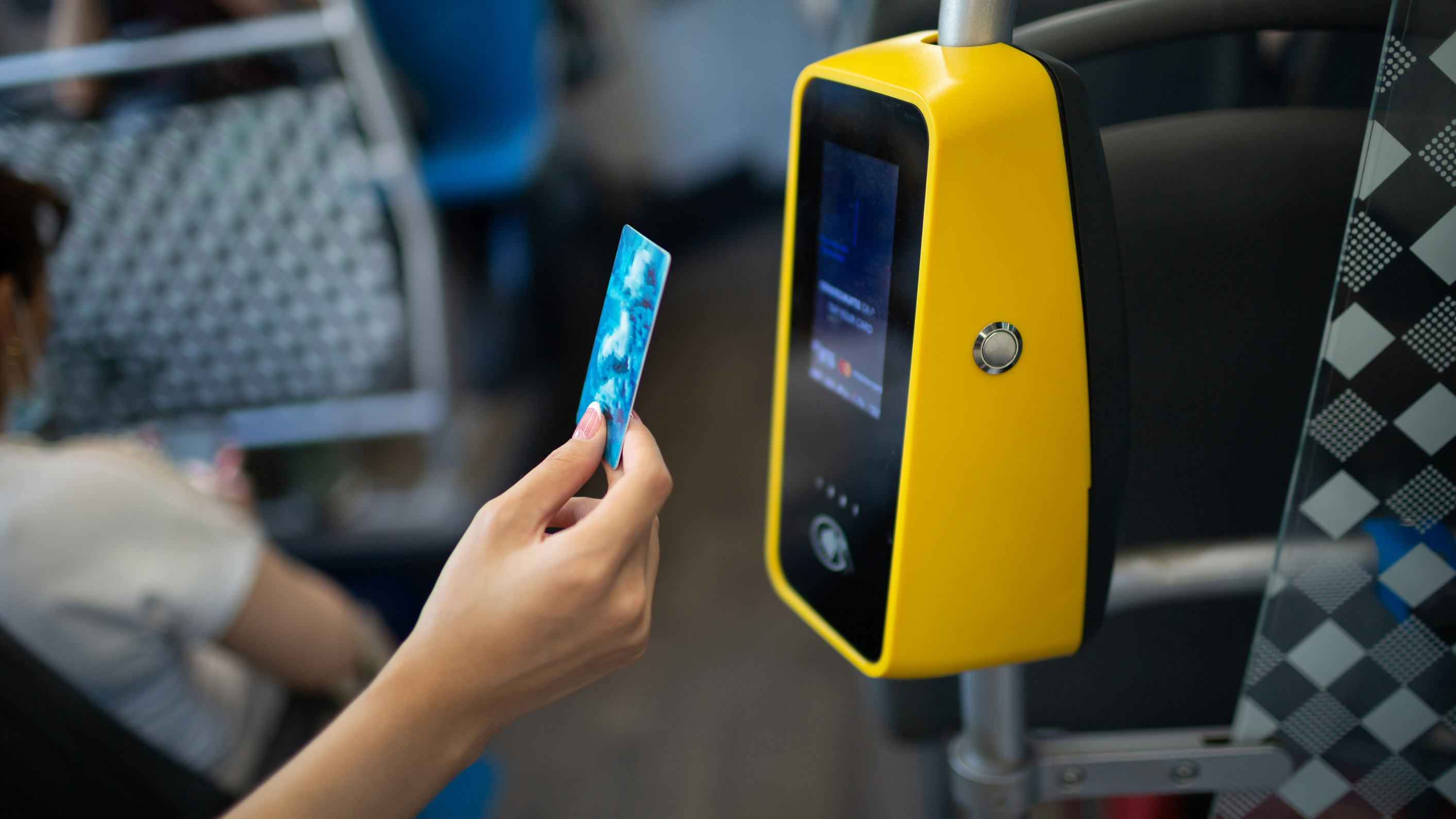Contactless open-loop payments: fueling an enhanced passenger experience
by Kalin Hitrov

As passenger expectations for convenience and seamless travel rise, transit agencies and operators are rethinking their approach to prioritize the passenger experience. Fortunately, the emergence of contactless open-loop payments provides a solution, ensuring smooth and equitable travel for all.
Paying for goods and services has never been so easy thanks to the proliferation of contactless payments. Anyone with an EMV bank card or enabled device can make everyday purchases swift, secure and simple with just a tap. More than half of Americans now use contactless payments – a behavioral shift that’s playing out on public transport.
Contactless open-loop systems make paying for a ride as simple as buying a cup of coffee by replacing cash and clunky legacy infrastructures with technology-enabled convenience – and the benefits are compelling.
Streamlined fare collection
Public transport payments are keeping pace with customer demand for convenience thanks to open-loop systems. Passengers simply tap a card reader with their bank card or smart device as they board and a cloud-based back-office handles fare calculation.
In contrast, paying by cash or with a reloadable closed-loop smart card requires passenger planning – from the time it takes to consider ticket prices and find the best value option to making sure they have enough money on them or loaded onto their prepaid card.
Tap-to-pay transit reduces queues by expediting the fare collection process. Tapping, rather than paying in cash trims 1.75 seconds off boarding times; and time-saving increases to 2.25 seconds versus swiping a card. Dwell times are also reduced, which benefits passengers, operators and local traffic.
Customizable fare capping is a powerful way to augment a contactless open-loop system – a ceiling on the amount a passenger pays in a day, week or month regardless of the number of trips. Passengers benefit from easy access to value, while transit operators benefit from increased patronage generated by this customer-centric system.
Improved convenience and accessibility
More than half (57%) of respondents to a Visa survey cited speed and efficiency as the top benefits of contactless open-loop payments. These enriching advantages are by-products of the convenience that’s inherent to this tap-to-pay revolution. No more fumbling for cash, carrying physical tickets, remembering and entering PINs, loading money onto pre-paid cards or waiting in long lines – it’s a quick and simple process that’s streamlining the way we pay and travel.
By embracing open-loop systems, PTAs and PTOs are also going that extra mile to improve public transport equity for groups like seniors, people with disabilities, people on low incomes and non-English speakers. This includes:
- Reducing queuing and waiting times at stations and stops.
- Enabling low-income passengers to use transit without prepayment via a pay-as-you-go (PAYG) channel.
- Fare-capping and other incentive schemes to help increase affordability without sacrificing ease of use.
- Accessibility features such as larger text, audio feedback, and simplified user interfaces, which cater to the needs of seniors and those with disabilities.
- Removing vending machines and kiosks with confusing interfaces, too many fare choices and language barriers from the payment process.
- Removing the need to complete a confusing registration process for a prepaid card.
Open-loop systems are also rising to the challenge of democratizing contactless payments by including the unbanked. Emerging solutions include the introduction of reloadable EMV cards and virtual EMV cards that enable third parties to subsidize travel for disadvantaged rider groups. In this respect, transit is leading the way, bringing the unbanked into the financial ecosystem.
Enhancing safety and hygiene:
According to the Visa survey, not having to carry cash (49%) and improving safety and hygiene (46%) are the second and third most cited benefits of contactless open-loop payments respectively. From a safety perspective, these streamlined systems remove cash from the payment process and significantly reduce waiting times, mitigating the risk of theft and assault.
In terms of hygiene, these contactless transactions minimize physical contact points – a far cry from physical cash payments. Faster transactions mean less time spent at ticket machines or interacting with staff, reducing congestion and minimizing the risk of close contact with others. This supports the broader goal of promoting social distancing in public transport systems during times of heightened awareness about hygiene and infectious diseases, such as a pandemic.
Leveraging data for optimization
Contactless payment systems generate valuable data insights for transit agencies, enabling data-driven decision-making that optimizes services and improves the overall passenger experience. Public transport networks that are still reliant on cash are missing out on valuable transaction data that drills into customer behavior and maps out how the services are being used.
With contactless ticketing technology, PTAs and PTOs can leverage new data channels – such as tracking EMV payments made at station gates and on vehicles – that inform route planning and help them develop ticketing strategies that are tailored to their passengers’ evolving needs and preferences. For example, when a fare capping system is implemented, the data can be assessed to ascertain if caps are being met.
In 2021, Caltrans’ California Integrated Travel Project (Cal-ITP) initiated four demonstration projects to implement contactless open-loop fare payments – allowing passengers’ debit/credit cards and mobile wallets to be tapped for fare payment – across four public transport networks in the state.
Through these projects, transit agencies and Cal-ITP identified metrics – categorized into rides, revenue, and riders – to assess the progress and success of the demonstrations via interactive dashboards and data visualizations that show accessible summary statistics. The resulting insights are essential to transit agencies and Cal-ITP for future implementations. Enriching metrics include:
- Number of rides per route: This provides agencies with more specific data that can help inform route planning.
- Revenues by day: Metrics like total contactless payment revenue can be harnessed by agencies for accounting and marketing purposes.
- Most popular days with riders: This information allows agencies to potentially increase services if a particular trend emerges.
Open-loop payments: the road to increased ridership and revenue
Contactless open-loop transit payment systems are no longer a nice to have; they’re increasingly a prerequisite for potential passengers – 94% of transit riders expect public transit to offer contactless payments moving forward, and 63% strongly expect them to be offered.
This demand is driven by an unflinching insistence that they receive a positive passenger experience that mirrors the customer-centric services they experience elsewhere. With their need for convenience, accessibility and cost-effectiveness resolved by these streamlined payment processes, PTAs and PTOs can achieve increased ridership and revenue.
At Littlepay, our commitment to making fare collection frictionless through contactless open-loop technology is forging a new era of positive passenger experiences that keeps them coming back. To learn more about how your organization can realize the many transformative benefits of our cloud-based transit payments infrastructure, contact our team today.
Trending Topics

Project Highlights: Washington DC’s record breaking upgrade to accept open loop payments

Nevada County Connects leverages Cal-ITP’s Mobility Marketplace to elevate the payment experience across its bus network

 Insight
Insight
 Knowledge
Knowledge
 News
News



